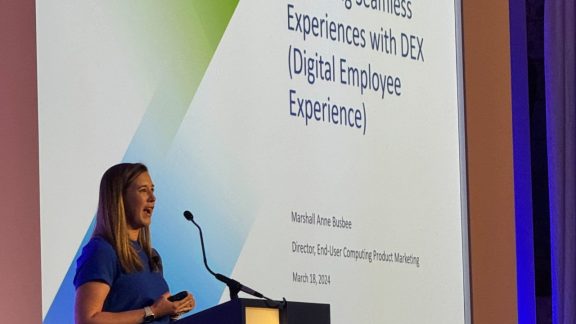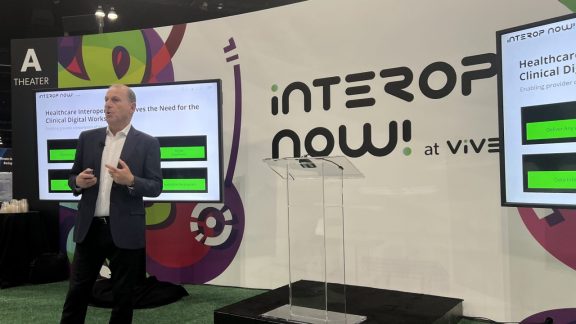By Raj Mallempati, Director, Product Marketing, End-User Computing, VMware
<<This is an updated to this blog as of August 3, 2011. For additional information on vSphere licensing, please read Bogomil Balkansky, VP, Product Management’s blog here.>>
As we have been interacting with customers and partners over the past couple of weeks and based on those conversations, I want to provide a primer on the desktop virtualization solutions licensing options provided by VMware.
In my blog post a while back, I outlined the how VMware’s new licensing model for vSphere 5 includes some important updates for our customers who are deploying VDI. Today I want to highlight and discuss three key scenarios for VMware customers and partners in light of today’s announcement:
VMware View is a comprehensive end-to-end desktop and application virtualization solution. We recommend View bundles for all desktop virtualization deployments because the bundles are designed to be the most cost effective for large scale deployments.
- VMware View is available in two editions—Enterprise and Premier.
- The View Enterprise bundle includes vSphere Desktop and vCenter Server in addition to View Manager, an enterprise desktop manager.
- View Premier includes additional components such as ThinApp, View Composer, View Client with Local Mode and vShield Endpoint. These components are designed to further reduce desktop costs and simplify desktop, application and security management.
- View is licensed on a concurrent desktop basis and sold in 10 and 100 quantity packs. For more details on VMware View, go here.
The launch of vSphere 5 introduced a new edition of vSphere named vSphere Desktop, to further help customers deploy desktop virtualization.
- vSphere Desktop provides the full range of features and functionalities of vSphere Enterprise Plus allowing you to achieve scalability, high availability and optimal performance at a lower cost for all of your desktop workloads.
- This edition comes with unlimited vRAM entitlement and is intended for customers who only want vSphere licenses for desktop virtualization.
- vSphere Desktop is licensed based on the total number of Powered On Desktop Virtual Machines and available in 100 license packs.
Customers who are running Desktop Virtualization on vSphere 4.x (or previous versions) and hold current SnS agreements may upgrade to vSphere 5 while retaining access to unlimited vRAM entitlement.
- vSphere licenses covered by this provision, must be managed by a different instance of Virtual Center than what manages the server virtualization deployment.
- We recommend that as you expand your server virtualization deployments, purchase vSphere Desktop to migrate existing desktops to the new platform and re-purpose the existing vSphere to host server based workloads.
At VMware we pride ourselves on providing customers with a simple and secure way to access and manage their virtual desktops via VMware View, and value the trust that more than 250,000 customers — including 100% of the Fortune 100 — place in VMware as their virtualization infrastructure platform.
I have posted an updated FAQ on vSphere Desktop below. Want to share your thoughts on our VDI licensing? Post a comment below with any questions as we’d love to hear from you.
Best,
Raj
Updated vSphere Dektop FAQ
Q. Which customers are eligible for vSphere Desktop?
A. vSphere Desktop is available to all commercial, academic, and government customers who want to purchase new licenses of vSphere to host desktop virtualization. Customers who purchase the VMware View bundles get vSphere Desktop with unlimited vRAM entitlement.
Customers who purchased licenses for vSphere 4.x (or previous versions) to host desktop virtualization, and hold current SnS agreements, may upgrade to vSphere 5.0 while retaining their current licensing metric and thus have access to unlimited vRAM entitlement. vSphere Desktop extends only to the purchases of new vSphere licenses for desktop virtualization.
Q. How can vSphere Desktop be purchased?
A. Purchases may be made through a VMware authorized reselling partner, OEM partner, via the VMware website or directly with VMware.
Q. When can I purchase vSphere Desktop?
A. vSphere Desktop is available for purchase with the vSphere 5 GA.
Q. Is there a detailed SKU list associated with vSphere Desktop?
A. This offer extends to the following SKUs:
- VS5-DT100VM-C
- VS5-DT100VM-A
- VS5-DT100VM-F
Q: What is included in the vSphere Desktop edition?
A. vSphere Desktop delivers the full range of vSphere 5 Enterprise+ features for desktop workloads. vSphere 5 Enterprise+ includes features such as High Availability, Data Recovery, vMotion, Virtual Serial Port Connector, Hot Add, vShield Zones, Fault Tolerance, Storage APIs for Array Integration, Multi-pathing, Storage vMotion, Distributed Resource Scheduler and Distributed Switch, IO controls (Network and Storage), Host Profiles and Auto Deploy, Policy Driven Storage and Storage DRS.
Q. Are there any restrictions with vSphere Desktop?
A. vSphere Desktop can be used only to host a desktop virtualization environment or desktop management and monitoring tools. You can use vSphere Desktop for desktop management and monitoring tools in a VDI environment only.
Desktop licenses covered by this provision, however, may not be managed by the same instance of Virtual Center which is being used to manage non-desktop OS virtual machines.
Q. I have spare vSphere Enterprise+ licenses. Can I use it for desktop virtualization?
A. Yes, customers with spare vSphere licenses from past purchases can use it to host a VDI environment. Customers who purchased licenses for vSphere 4.x (or previous versions) prior to September 30, 2011 to host desktop virtualization, and hold current SnS agreements, may upgrade to vSphere 5.0 while retaining access to unlimited vRAM entitlement.
Desktop licenses covered by this provision, however, may not be managed by the same instance of Virtual Center which is being used to manage non-desktop OS virtual machines.
Q. I am currently using vSphere Enterprise+ to deploy a third party desktop virtualization solution. Can I continue to do so?
A. Yes. Customers currently using vSphere as backend for a 3rd party VDI deployment can continue to do so. Customers who purchased licenses for vSphere 4.x (or previous versions) prior to September 30, 2011 to host desktop virtualization, and hold current SnS agreements, may upgrade to vSphere 5.0 while retaining access to unlimited vRAM entitlement.
Desktop licenses covered by this provision, however, may not be managed by the same instance of Virtual Center which is being used to manage non-desktop OS virtual machines.
Q. Can I downgrade to vSphere 4 desktop until my 3rd party vendor supports vSphere 5?
A. Yes, vSphere 5 Desktop can be downgraded to vSphere 4 Desktop and upgraded to vSphere 5 Desktop later.
Q. Do I need a separate vCenter server for my VDI hosts?
A. Yes, like VMware View Deployments on vSphere 4.x you will need a separate vCenter server for your VDI hosts.
Q. Can vSphere Desktop be used to run 3rd party desktop management and infrastructure tools or 3rd party server products for desktops?
A. As per the vSphere 5 EULA, vSphere Desktop standalone can be used for hosting virtual desktop machines or desktop management and monitoring tools. You can use vSphere Desktop for desktop management and monitoring tools in a VDI environment only.
Q. What is the impact to View bundles or View add-on SKUs?
A. There is no change to the price of the View bundles. View Enterprise Add-on and View Premier Add-on SKU prices have increased. We encourage customers to consider View bundles for all their new desktop virtualization deployments. The bundles are designed to be the cost effective solution for large scale desktop deployments.
Any vSphere 5 licenses purchased separately to run View Enterprise Add-on and View Premier Add-on will be subject to the per processor pooled vRAM entitlement licensing.








